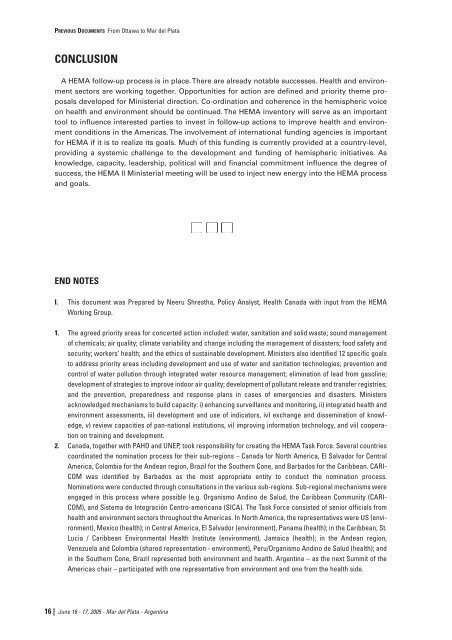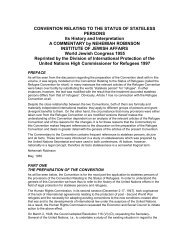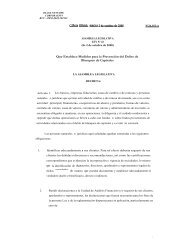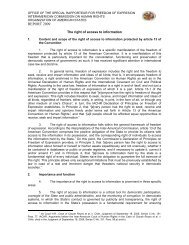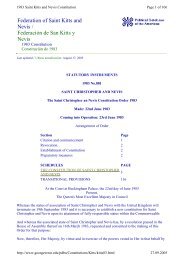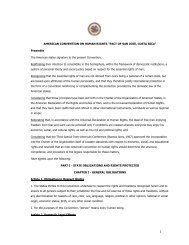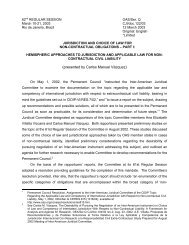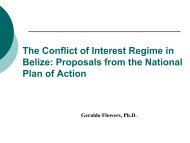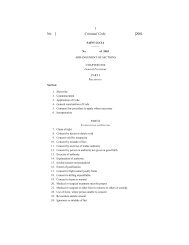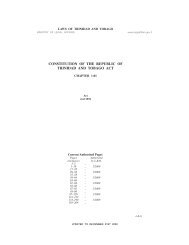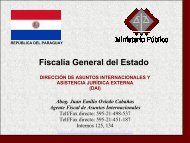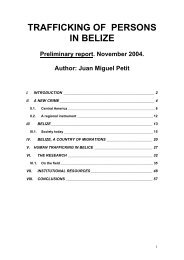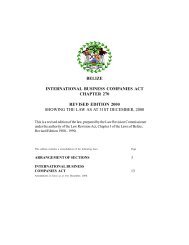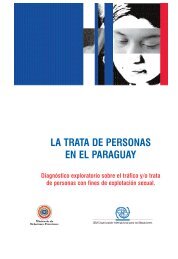(HEMA) Initiative. - OAS
(HEMA) Initiative. - OAS
(HEMA) Initiative. - OAS
Create successful ePaper yourself
Turn your PDF publications into a flip-book with our unique Google optimized e-Paper software.
PREVIOUS DOCUMENTS From Ottawa to Mar del Plata<br />
CONCLUSION<br />
A <strong>HEMA</strong> follow-up process is in place. There are already notable successes. Health and environment<br />
sectors are working together. Opportunities for action are defined and priority theme proposals<br />
developed for Ministerial direction. Co-ordination and coherence in the hemispheric voice<br />
on health and environment should be continued. The <strong>HEMA</strong> inventory will serve as an important<br />
tool to influence interested parties to invest in follow-up actions to improve health and environment<br />
conditions in the Americas. The involvement of international funding agencies is important<br />
for <strong>HEMA</strong> if it is to realize its goals. Much of this funding is currently provided at a country-level,<br />
providing a systemic challenge to the development and funding of hemispheric initiatives. As<br />
knowledge, capacity, leadership, political will and financial commitment influence the degree of<br />
success, the <strong>HEMA</strong> II Ministerial meeting will be used to inject new energy into the <strong>HEMA</strong> process<br />
and goals.<br />
END NOTES<br />
I. This document was Prepared by Neeru Shrestha, Policy Analyst, Health Canada with input from the <strong>HEMA</strong><br />
Working Group.<br />
1. The agreed priority areas for concerted action included: water, sanitation and solid waste; sound management<br />
of chemicals; air quality; climate variability and change including the management of disasters; food safety and<br />
security; workers’ health; and the ethics of sustainable development. Ministers also identified 12 specific goals<br />
to address priority areas including development and use of water and sanitation technologies; prevention and<br />
control of water pollution through integrated water resource management; elimination of lead from gasoline;<br />
development of strategies to improve indoor air quality; development of pollutant release and transfer registries;<br />
and the prevention, preparedness and response plans in cases of emergencies and disasters. Ministers<br />
acknowledged mechanisms to build capacity: i) enhancing surveillance and monitoring, ii) integrated health and<br />
environment assessments, iii) development and use of indicators, iv) exchange and dissemination of knowledge,<br />
v) review capacities of pan-national institutions, vi) improving information technology, and vii) cooperation<br />
on training and development.<br />
2. Canada, together with PAHO and UNEP, took responsibility for creating the <strong>HEMA</strong> Task Force. Several countries<br />
coordinated the nomination process for their sub-regions – Canada for North America, El Salvador for Central<br />
America, Colombia for the Andean region, Brazil for the Southern Cone, and Barbados for the Caribbean. CARI-<br />
COM was identified by Barbados as the most appropriate entity to conduct the nomination process.<br />
Nominations were conducted through consultations in the various sub-regions. Sub-regional mechanisms were<br />
engaged in this process where possible (e.g. Organismo Andino de Salud, the Caribbean Community (CARI-<br />
COM), and Sistema de Integración Centro-americana (SICA). The Task Force consisted of senior officials from<br />
health and environment sectors throughout the Americas. In North America, the representatives were US (environment),<br />
Mexico (health); in Central America, El Salvador (environment), Panama (health); in the Caribbean, St.<br />
Lucia / Caribbean Environmental Health Institute (environment), Jamaica (health); in the Andean region,<br />
Venezuela and Colombia (shared representation - environment), Peru/Organismo Andino de Salud (health); and<br />
in the Southern Cone, Brazil represented both environment and health. Argentina – as the next Summit of the<br />
Americas chair – participated with one representative from environment and one from the health side.<br />
16 | June 16 - 17, 2005 - Mar del Plata - Argentina


